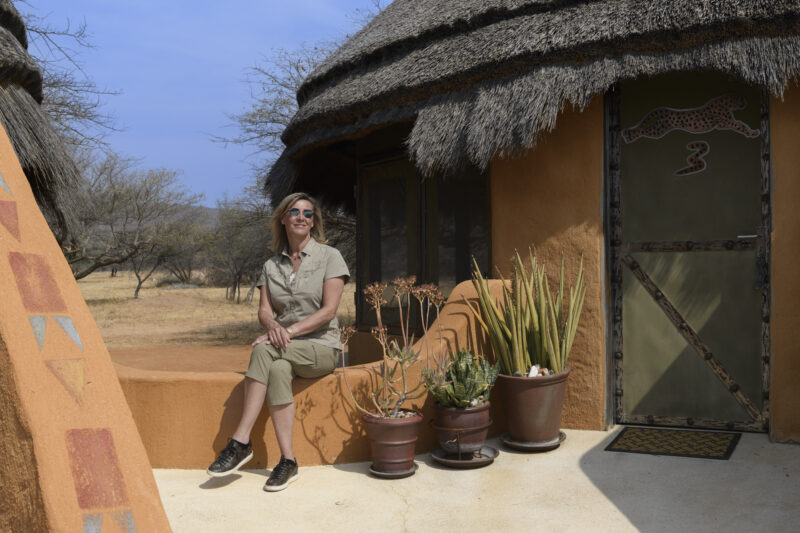Road trip through Namibia - Okonjima Game Reserve
The long drive from Etosha National Park to Windhoek takes us past the Waterberg Plateau. Serious conflicts between man and predators are inevitable in the agricultural area surrounding the plateau. We stay in the Okonjima Game Reserve and visit the AfriCat Foundation, dedicated to the conservation of large carnivores.
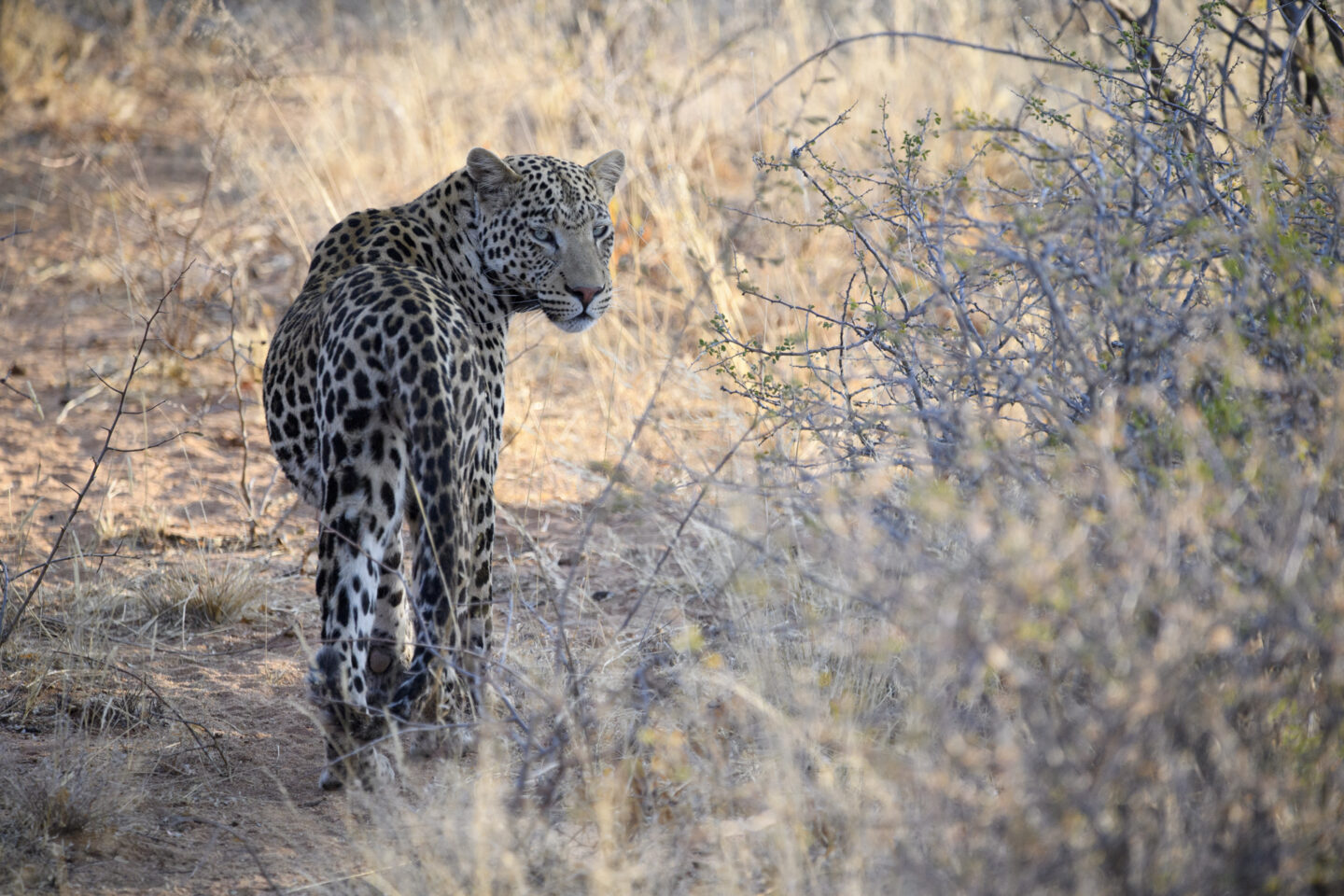
The Waterberg Plateau
The Waterberg Plateau rises high above the vast plains of the Kalahari. The area is rich in wildlife and difficult to access. For this reason, it was declared a nature reserve in 1972. Endangered species such as white and black rhino and sable antelope were moved here to protect them from poachers. The program was a great success and rare animals continue to be reintroduced from Waterberg to other Namibian reserves. The Waterberg Plateau has a large and rich variety of fauna and flora, including leopard and brown hyena, as well as more than 200 bird species. The area can only be visited with a guide.
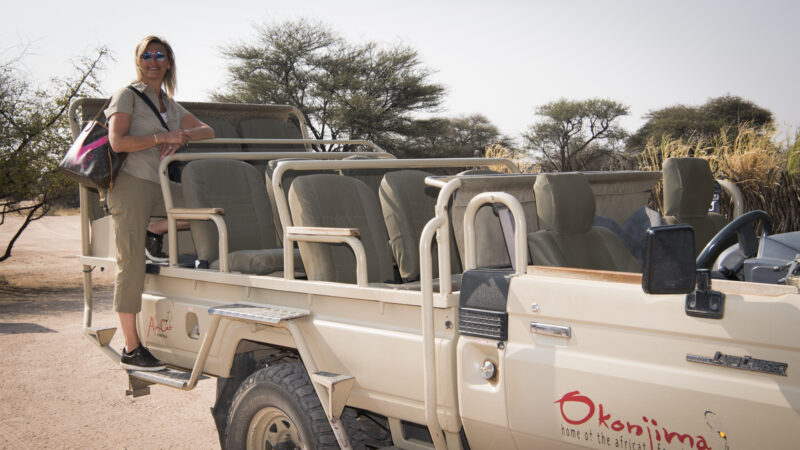
Around the Waterberg Plateau is Namibia's main agricultural area. This inevitably leads to serious conflict situations between local farmers and predators such as leopards and cheetahs. Farmers often hunt the animals that attack their livestock. The large predators are caught or injured and the cubs are often left alone.
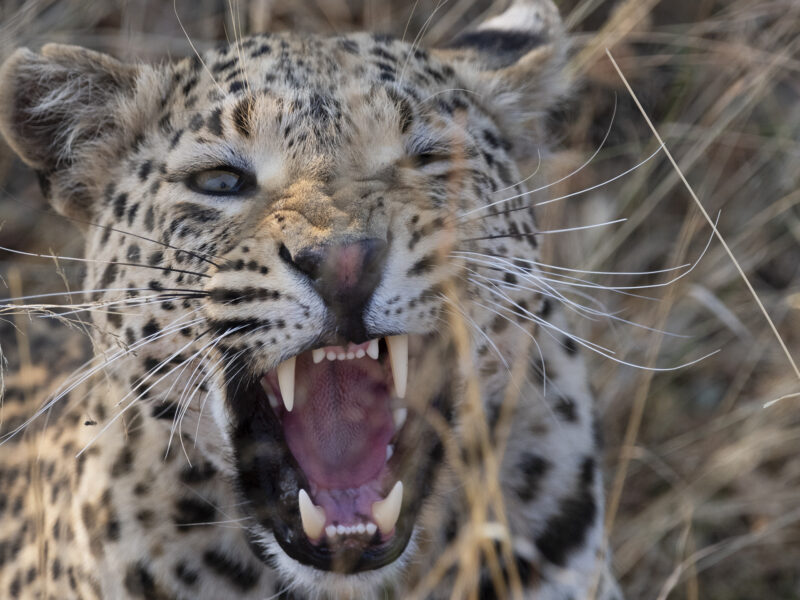
Okonjima Game Reserve and the AfriCat Foundation
In 1993, the former Okonjima cattle ranch was transformed into a game reserve. The Okonjima Game Reserve covers an area of twenty thousand hectares and is home to the AfriCat Foundation. The organization makes an important contribution to the protection of large predators in their natural habitat. AfriCat takes in problem animals and finds solutions to release captured and injured predators back into the wild. Since its inception, AfriCat Foundation has rescued approximately 1,100 large predators such as cheetahs, leopards and lions. More than 85% of these animals have been released back into the wild.
Hunting is an instinct in predators, but some animals have no experience because they were removed from their environment when they were young. Others are old, weak or injured and need care. In the reserve, these animals learn how to hunt and feed themselves again. This gives them a chance to return to the wild. Before being released into the reserve, cheetahs and leopards are fitted with transmitters around their necks so that their well-being can be closely monitored. The transmitters also allow reserve visitors to track and observe the animals with a guide.
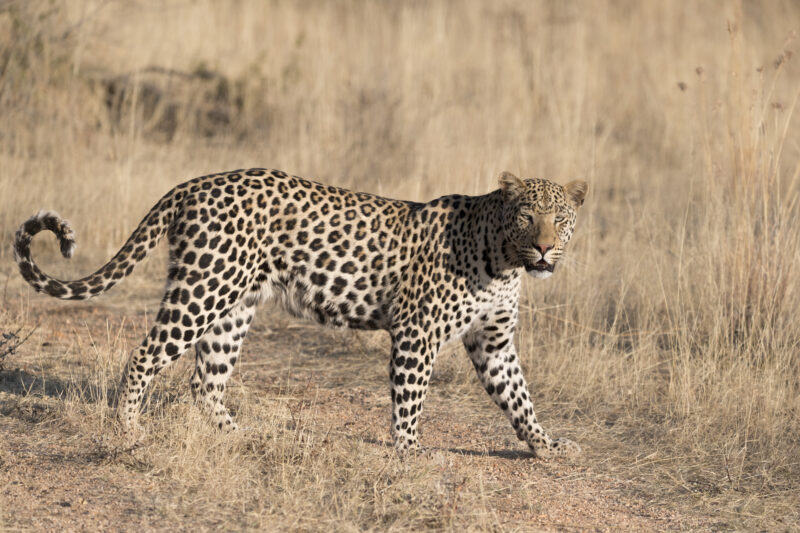
The leopards of Okonjima
Our guide Daniel will accompany us on several game drives in Okonjima Game Reserve for two days. This afternoon we will be tracking leopards. There are about 30 leopards living within the reserve of which 12 animals wear a transmitter and have a name.
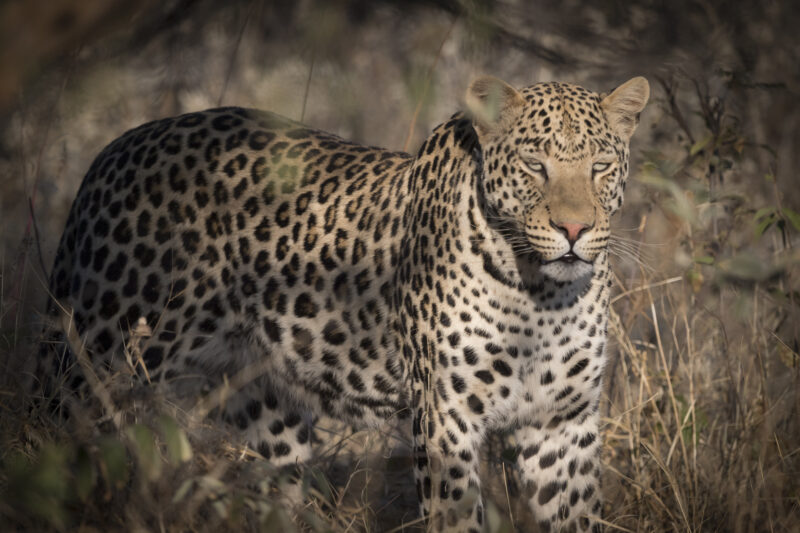
We catch Electra's signal and see her head sticking out among the bushes just above a rock. We then look for Malali, a young female almost two years old. Daniel has trouble locating her position but in the meantime catches the signal from Leela who just has two cubs. The leopard is safely sheltered with her young in dense bush and we quietly leave her alone. We continue our search for Malali and find her two hours later. Daniel approaches the leopard in a circular motion and suddenly the animal is right in front of us. Malali watches us quietly and it is clear that she is used to jeeps and people. She licks her paws and begins to yawn, a sign of restlessness. According to Daniel, she will move if she yawns three times. We stay with her for a while and leave in search of Leela and the cubs. We soon find her, but she is still hidden deep in the bush. Daniel does the utmost to get to her, but we have to give up. We have no chance of seeing her from the jeep and getting out is not an option when it comes to leopards. We then follow the trail of Achilles and find him under a tree. He rests in the light of the setting sun but is startled by our presence. We follow him at a distance until another jeep arrives.
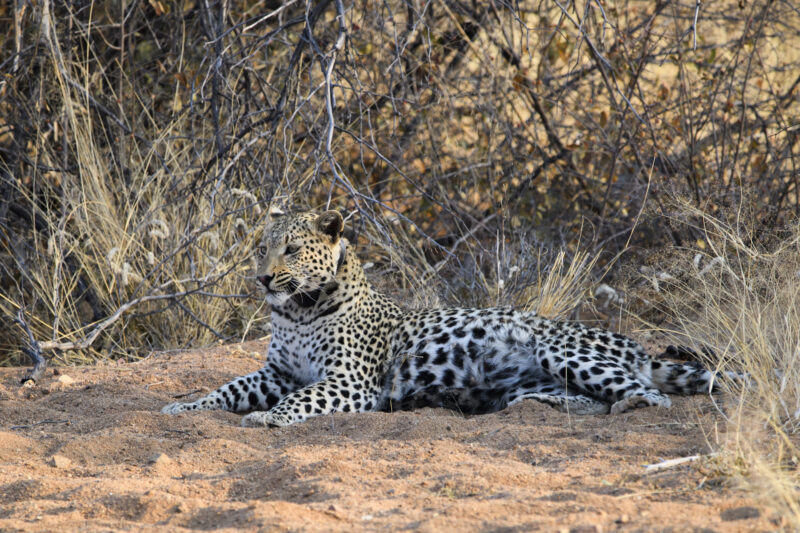
We leave and enjoy the African sunset. On the way back to camp we see springbok and the unique sable antelope. It is a beautiful animal with a black and white head and impressive curved horns.
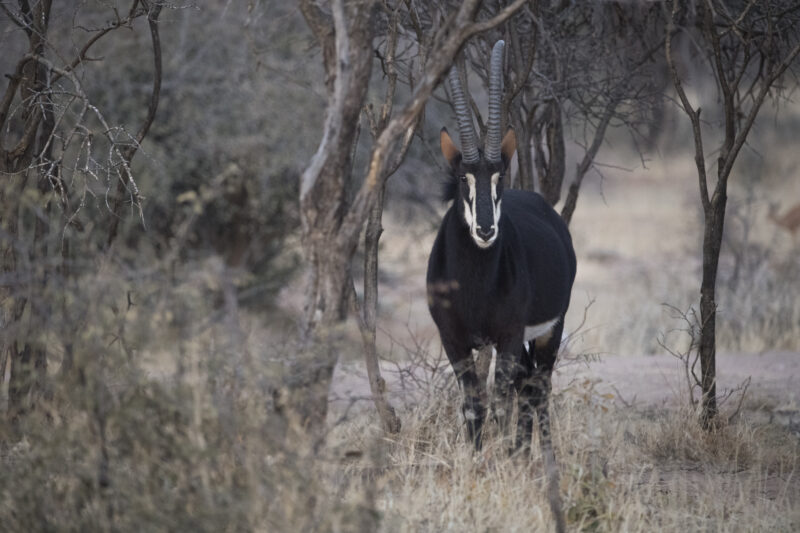
Cheetah tracking on foot
We leave early the next morning in search of cheetahs. Daniel and another guide are waiting for us in the jeep. We will track the cheetahs on foot and the second guide will be responsible for our safety. He carries a heavy bat and will lure the cheetah to him in case of an attack. The guides know the behavior of the wild animals very well and I am confident.
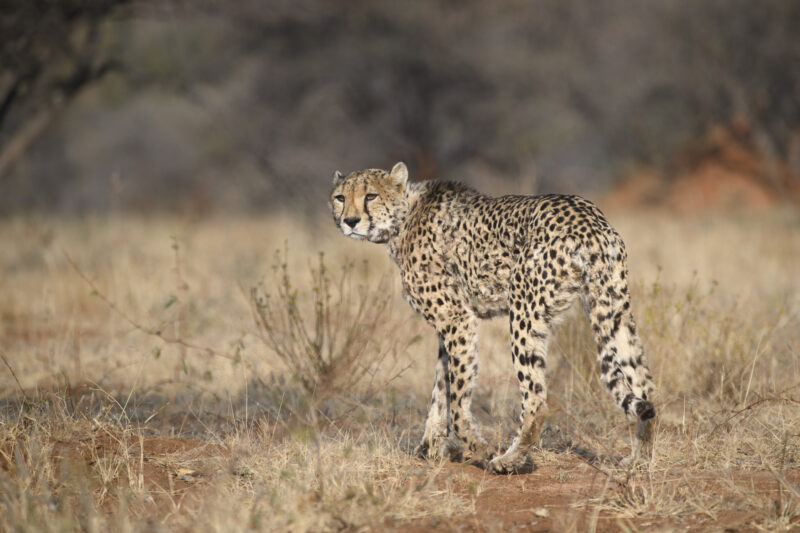
Daniel takes out his antenna and searches for the cheetahs and leopards. He spots 3 cheetahs, 2 of them together. They are the 4 year old stepbrothers Harley and Spitfire. We follow their signal. On the way we see many giraffes and colorful birds. Suddenly the signal is very strong. Time to get out. We get some more tips on what not to do if the cheetahs attack. Stay where you are and don't run because you will become prey. We follow Daniel in a single line, watching out for the thorny branches. We see the cheetahs moving through the thicket. They notice us and move off. We pursue and slowly approach them. They come to a clearing and stop abruptly. Daniel allows us to come within 10 meters of the cheetahs, but no closer. The animals are used to humans and know that we will not harm them. They look around for prey. We apparently do not qualify. Cheetahs have highly developed senses of sight and smell and can find prey from 4 kilometers away. We stay with the cheetahs for a while and leave satisfied.
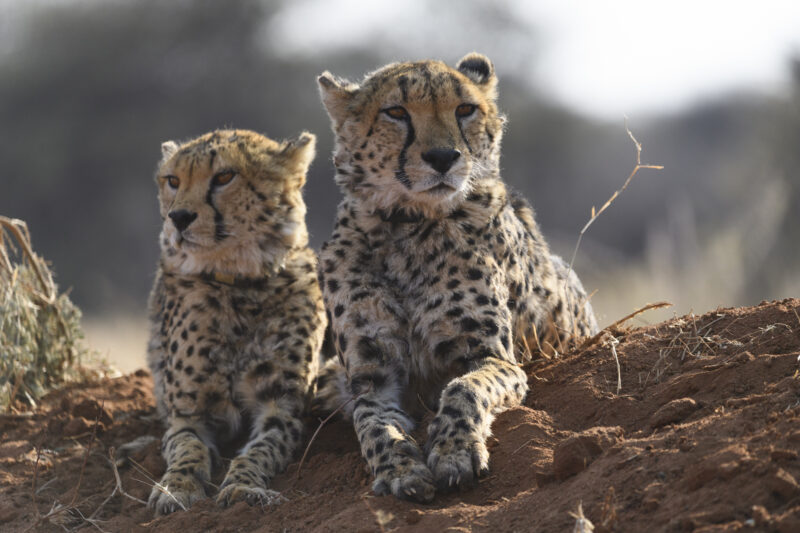
On the way back to camp we come across a brown hyena. It is a large and hairy animal with heavy front legs and strong jaw bones. The hyena cleans up all the remains of nature and can do a lot of damage.
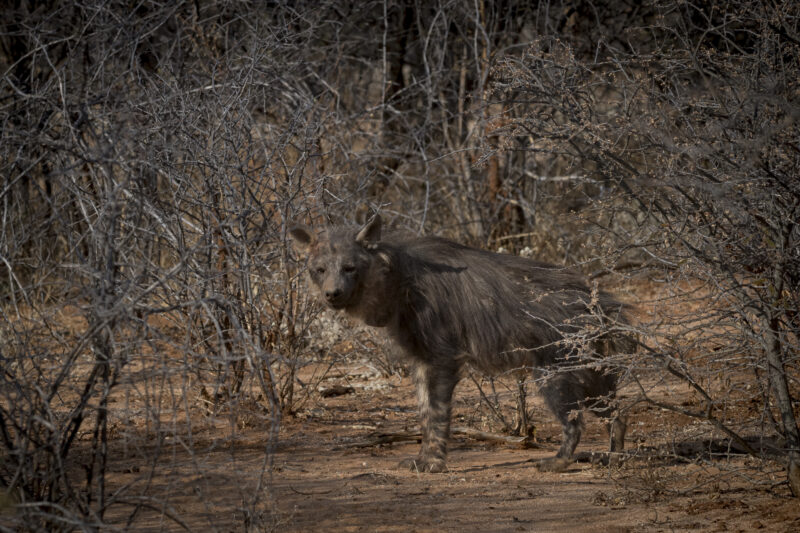
Okonjima Bush Camp
Okonjima Game Reserve offers several options for staying in the sanctuary. Several camps are scattered throughout a two thousand hectare predator-free safety zone. Guests can hike and bike safely. We stay at Okonjima Bush Camp, a beautiful lodge with separate suites built in adobe style. Each room has a separate outdoor sitting area overlooking the vast bush. Animals such as antelope roam freely and a small watering hole attracts a variety of birds. The suites are decorated in typical African style and offer plenty of privacy. The communal open plan lounge is very cozy and opens onto a panoramic restaurant where you can enjoy fine meals.
